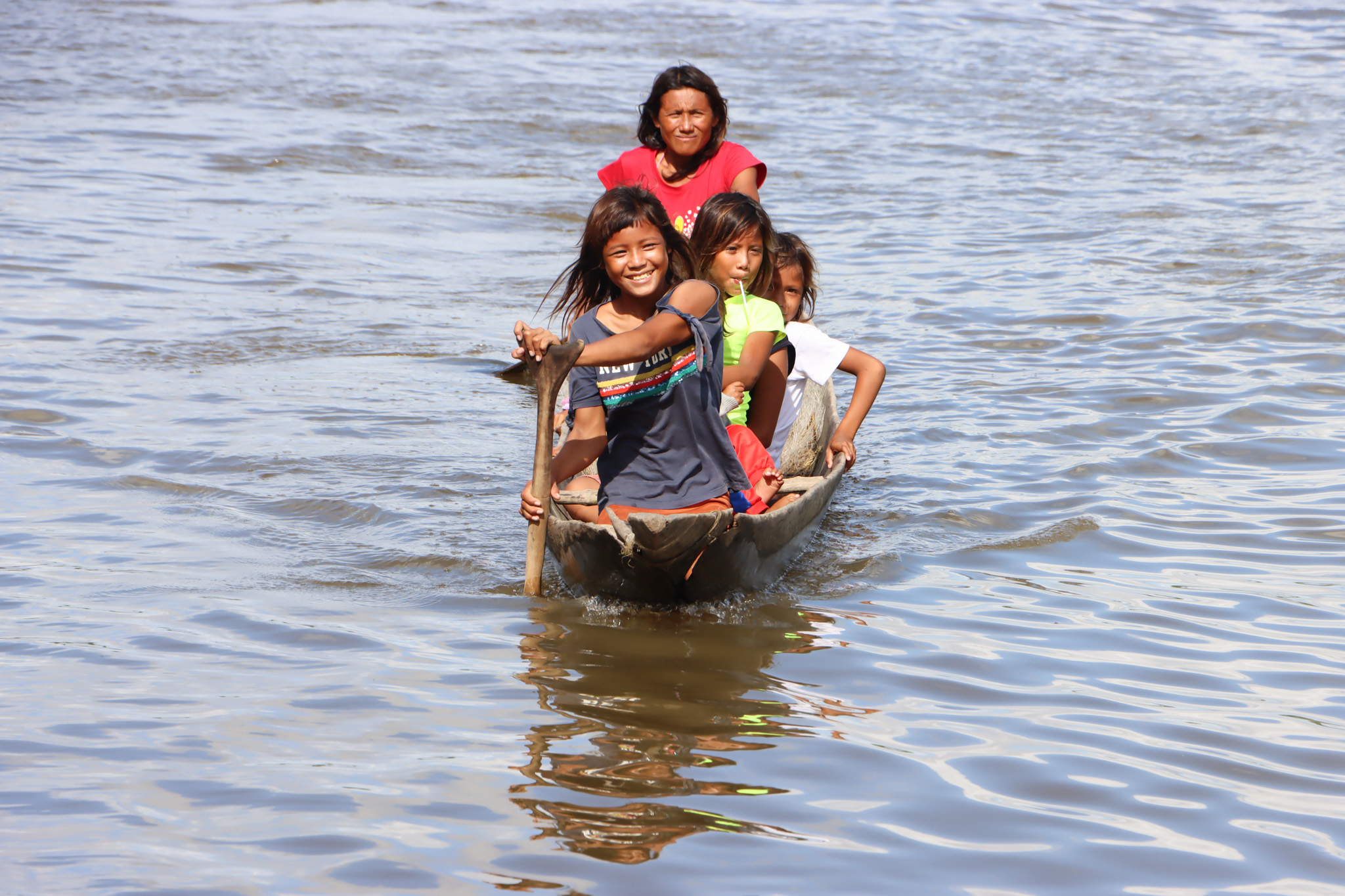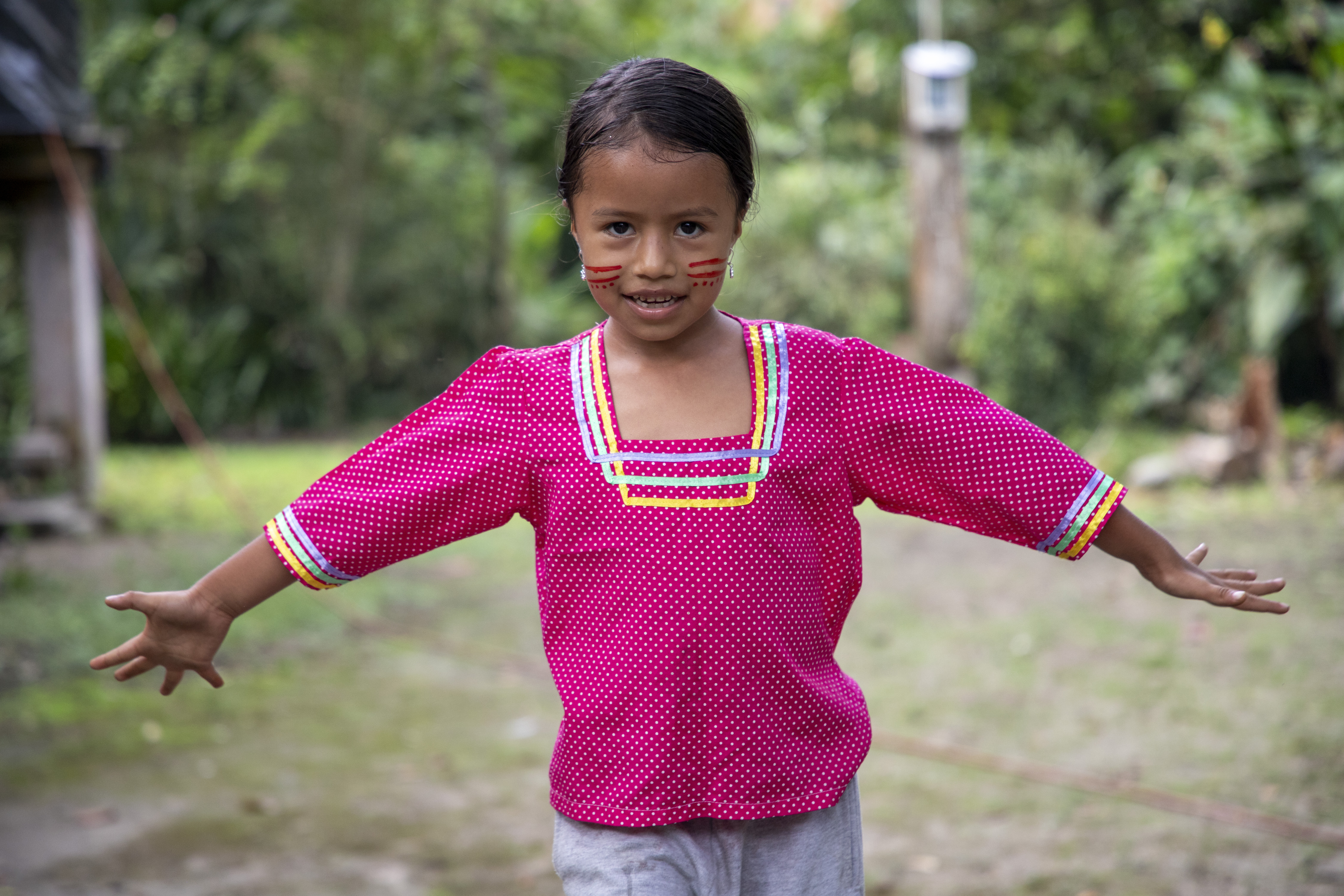
Whose Future Are We Negotiating? Why COP30 Must Put Children at the Heart of Climate Action
As leaders gather in Brazil, Luis Enrique Corzo, World Vision’s Regional Director for Climate Action Initiatives in Latin America, reflects on an uncomfortable yet urgent truth: the fight for climate justice is, at its core, a fight for childhood itself
10 November 2025.
With the clock ticking towards COP30 in Belém do Pará, the world once again stands at the crossroads of urgency and inertia. The temperature target of 1.5°C is slipping from our grasp, yet the stakes could not be higher not for politicians or pundits, but for the children who will inherit a planet shaped by promises either kept or broken. They will breathe the air we contaminate, drink the water we fail to protect, and live the consequences of choices made in rooms where their voices are rarely heard.
Arguably, this COP is more than a diplomatic ritual; it is a moral reckoning. After a decade since the last conference on Latin American soil, COP30 offers the Global South a rare opportunity to lead, not as a victim of crisis, but as a visionary of solutions. Yet one might contend that the loudest voices in climate diplomacy remain those farthest from its human cost.
Listening to the Unheard
In theory, every Party’s commitments under the Nationally Determined Contributions (NDCs) should reflect the needs of those most affected. In practice, the evidence is stark. As of July 2024, data from Climate Watch show that only 31 of 180 Parties meet all four criteria for child-sensitive climate planning, with a further 33 meeting three. Barely a third of the world’s governments, then, have placed children at the centre of their climate policies.
While persuasive on paper, global pledges often fail to capture the raw reality: a child walking mile under a scorching sun to fetch water from a shrinking stream; a teenager watching floodwaters consume her home; classrooms silenced by drought or disaster. Central to this failure is an assumption that technical fixes can substitute for lived experience.
To a certain extent, the challenge is not ignorance but inattention. Policymakers know the data yet still treat children as passive beneficiaries rather than essential partners in designing a sustainable future.

When Children Lead, Change Follows
Organisations like World Vision have long insisted on reversing that dynamic. Across Latin America, Africa and Asia, participatory processes give children the platform to define their priorities and propose solutions. The report Children’s Voices from the Dry Corridor captures precisely that spirit 1,268 children and adolescents in Central America, each determined to rebuild what climate change has stripped away.
Their message is simple yet profound: they are not waiting for permission to act. The report highlights 116 proposals spanning four strategic pillars, regenerating ecosystems, securing water, raising environmental awareness, and strengthening risk management. These are not abstract ideas. They are blueprints for resilience conceived by those who live the consequences daily.
Take the Hope for the Dry Corridor initiative. It has mobilised entire communities to restore forests, safeguard watersheds and educate families on sustainable practices. Alongside the Amazon Basin Initiative, it aims to reach over 10 million children and their families, restoring six million hectares of land. Rarely has youth-led action been so tangible or so overlooked in policy circles.
The Global South’s Defining Moment
Although it could be said that the Global North dominates the narrative on decarbonisation and energy transition, leadership must now emerge from the Global South. Countries like Brazil, Colombia and Guatemala have both the moral authority and experiential insight to bridge adaptation with justice.
Countries such as Brazil who has emerged and positioned themselves as a reference in how the global south can be a protagonist in the effort in make significant efforts in terms of adaptation and mitigation are also a reference in terms of child sensitivity covering the four criteria in their most updated NDC’s and can be an example for countries such as Guatemala that currently ranks “Category C” in child-sensitivity within its NDCs, meeting just two of four key criteria. Yet therein lies its potential. By elevating children’s wellbeing as a national climate priority from local consultations to international negotiations, countries like Guatemala and others in Latin America and the Caribbean could set a precedent for a region too often cast as reactive rather than proactive.
To a certain extent, one might argue that genuine progress depends not only on technology or finance, but on empathy. The ability to design climate policy that sees children not as data points, but as rights holders, visionaries and future leaders.

The Call We Cannot Ignore
The truth is both simple and uncomfortable: a call for climate action is a call for childhood itself. To secure one is to safeguard the other. Each degree of warming stolen from the atmosphere is a year of safety returned to a child’s life. As COP30 convenes, negotiators, donors and governments must act with moral clarity. Embed child-sensitivity into every NDC. Ensure climate finance reaches those who need it most.
History will not remember the technicalities of the negotiation halls in Belém. It will remember whether the world chose to act while it still could or whether it left the next generation to clean up the debris of our indecision.
Redefine climate ambition through the eyes of a child. The future is still negotiable, but not for long.
Luis Enrique Corzo, is world Vision Regional Director LAC Climate Action Initiatives. He is an International Environmental Stewardship and Climate Action specialist with ten years of experience leading business development, portfolio management and regional programming across Latin America and the Caribbean. His work encompasses climate adaptation, mitigation, resilience, sustainable development, and humanitarian action, underpinned by a firm commitment.

